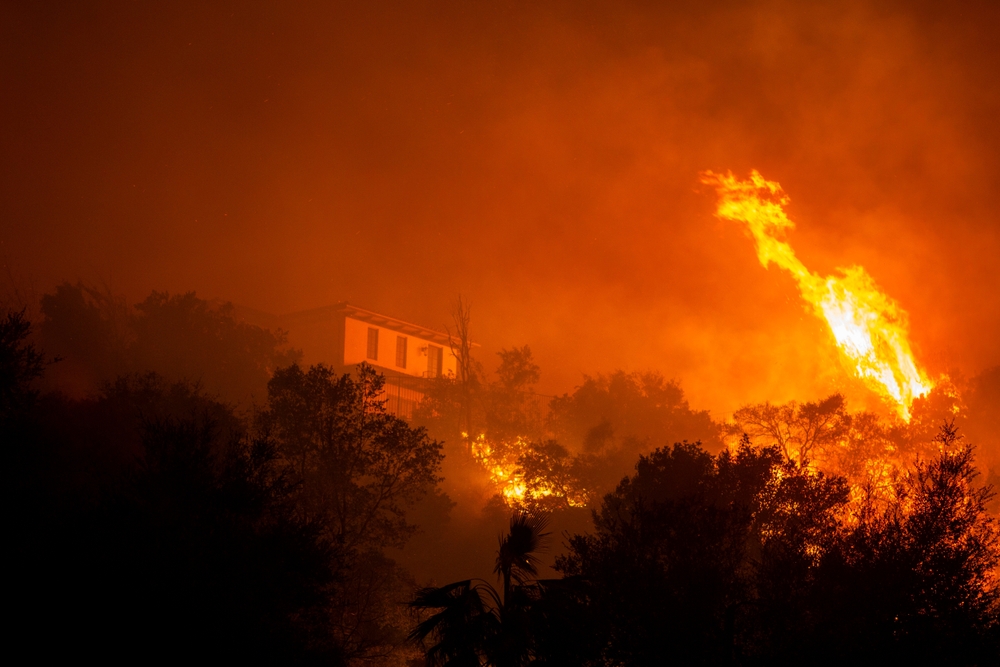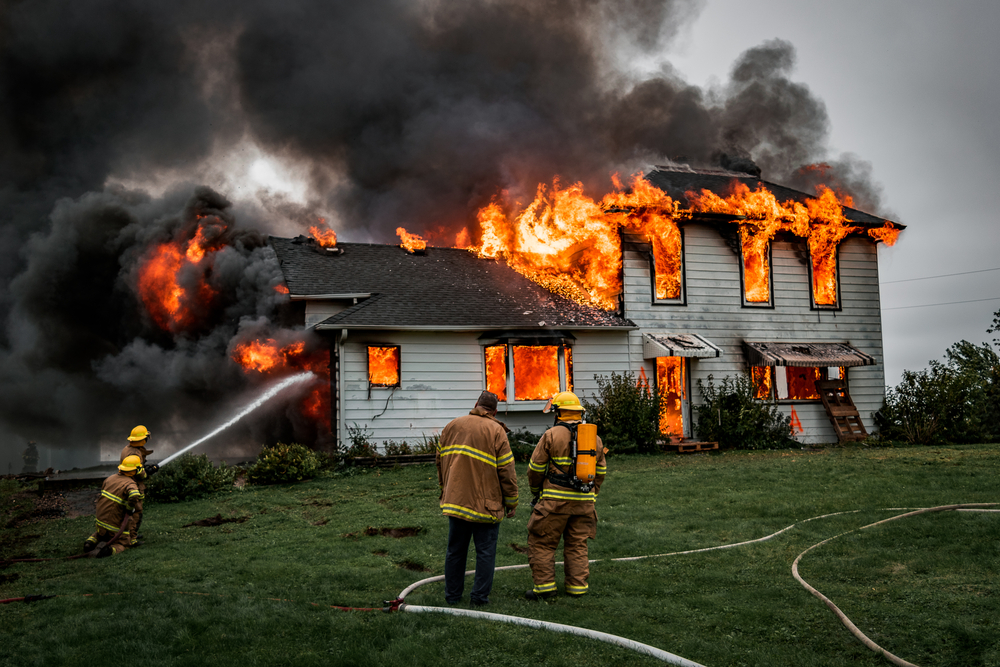Your cart is currently empty!
Family Who Lost Home Faces Uncertainty After Losing Insurance Coverage Before Fire

For one close-knit family in Altadena, life took a devastating turn as flames consumed not just their home but the memories and security it represented. A catastrophe like this leaves more than ashes behind—it raises questions, fears, and unimaginable challenges. Yet, as they try to piece together what’s left, an unexpected twist threatens to make their recovery even harder.
How does a family move forward when their safety net is suddenly pulled out from under them? And what happens when the promise of rebuilding feels just out of reach?

The Fire That Changed Everything
In the quiet town of Altadena, a place known more for its scenic vistas than tragic headlines, the Eaton Fire erupted with a ferocity that left residents and local authorities stunned. Within hours, an inferno raged through the community, indiscriminately claiming everything in its path, including the Sawyers’ family home—a sanctuary for Lydia, her husband Tom, their uncle Richard, and three young grandchildren.
As Lydia Sawyer stood amidst the ruins of what was once a bustling, lively home, her emotions spilled over. “It’s my first time seeing it. It’s breaking my heart,” she said. Nearby, Tom grappled with the reality of explaining the loss to their grandchildren, each too young to fully comprehend the scale of what had happened. “It’s going to be the hardest thing to do ever, to tell them that everything they have, everything they own is lost,” he said, struggling to find the words.
Richard Castañeda, the patriarch who had bought the house nearly four decades ago, felt the weight of his years as he looked over the charred remains. His connection to the place was deep, tinged with the memories of a spouse lost to dementia years earlier. “Oh, it’s hard to put into words. I lost my wife maybe three, four years ago. Now I lost everything,” he reflected, his grief palpable.
Coping With No Insurance Coverage
As the immediate shock of the Eaton Fire began to subside, the Sawyer family faced a new, unforeseen challenge that compounded their despair. Just when they needed support the most, they learned that their home insurance had lapsed due to a missed payment—a detail overlooked amidst the chaos of daily life and caregiving for an elderly relative and young children.
The revelation came at the worst possible time. The insurance company was unsympathetic to the Sawyers’ plight, leaving them without the financial lifeline that many rely on to start the rebuilding process after such a catastrophe. For the family, this meant not only losing their home and possessions but also facing the daunting prospect of rebuilding from scratch without the cushion of insurance proceeds.
Faced with the monumental task of rebuilding their lives from the ashes, they turned to their community for support. A GoFundMe campaign was quickly established, appealing to the kindness of strangers and friends alike to help the family regain some semblance of stability.
The community response has been heartening, with donations and offers of support pouring in. At the time of writing, the GoFundMe page has accumulated over $10,000 in donations.

Steep Challenges of Being Uninsured in Times of Disaster
When a family loses their home to a disaster without home insurance, they face a multitude of daunting challenges, both financially and emotionally. Without the protection of insurance, the financial responsibility for repairing or rebuilding the home falls entirely on the homeowners. This can be prohibitively expensive, potentially leading to significant debt as homeowners struggle to cover the costs of construction and replacement of personal belongings.
Government aid, such as that provided by FEMA, often offers only temporary relief. This assistance typically focuses on immediate needs like temporary housing and basic repairs, and rarely covers the full cost of a destroyed home. Homeowners are thus left with a substantial financial gap that is difficult to bridge without insurance.
Additionally, the loss of personal property—everything from furniture to personal items—can add thousands of dollars to the overall burden. Homeowners without insurance coverage must also continue to pay any existing mortgage on the destroyed property, compounding their financial challenges and leading to potential legal complications.
Beyond the financial impact, the lack of insurance can exacerbate the emotional trauma of losing a home. Families may endure prolonged instability as they navigate long-term housing solutions, contributing to ongoing stress and psychological strain. In essence, lacking home insurance not only magnifies the financial repercussions of a disaster but also deepens the emotional toll, making recovery a far more grueling process.
How to Support Families Like the Sawyers
In the aftermath of natural disasters, the question often arises: how can we help those affected rebuild their lives? Supporting families like the Sawyers requires a multifaceted approach that goes beyond immediate relief, focusing also on sustainable recovery and resilience building. Here are some actionable ways the community and individuals can offer their support:
- Financial Assistance: Donating to GoFundMe campaigns or other fundraising initiatives specifically set up for disaster victims is a direct way to help. Ensure the campaigns are verified to avoid scams and ensure that the aid reaches those who need it most.
- Volunteer Efforts: Local rebuilding projects often need volunteers. Offering your time and skills can be invaluable, whether it’s helping clear debris, rebuilding homes, or providing administrative support to relief organizations.
- Donation of Goods: In the immediate aftermath, families often need basic necessities such as food, clothing, and household items. Donating these goods to recognized organizations can make a significant difference.
- Long-Term Support: Recovery from a disaster is a lengthy process. Long-term support can include sponsoring a family, providing scholarships for affected children, or supporting mental health services.
- Advocacy and Awareness: Raising awareness about the challenges disaster victims face can help influence policy changes and improve insurance coverage and disaster preparedness.
- Emotional Support: Sometimes, simply offering a listening ear or a shoulder to lean on can provide immense relief to those who have experienced loss. Being there for emotional support is crucial.
Finding Hope Amid the Ashes
As we reflect on the story of the Sawyer family and their journey through loss and resilience, it’s clear that the path to recovery after a disaster is both challenging and transformative. The Eaton Fire, like many natural disasters, left behind a landscape of loss but also a blueprint for community compassion and collective action. The Sawyers’ experience underscores the essential role of support systems and the impact of community solidarity in the face of adversity.
While the road ahead for them, and many others like them, is fraught with obstacles, it is also lined with opportunities for growth and renewal. Through the collective efforts of individuals, communities, and organizations, families can begin to rebuild not just their homes but their lives, finding new strength in the support of others and hope amidst the ruins.
